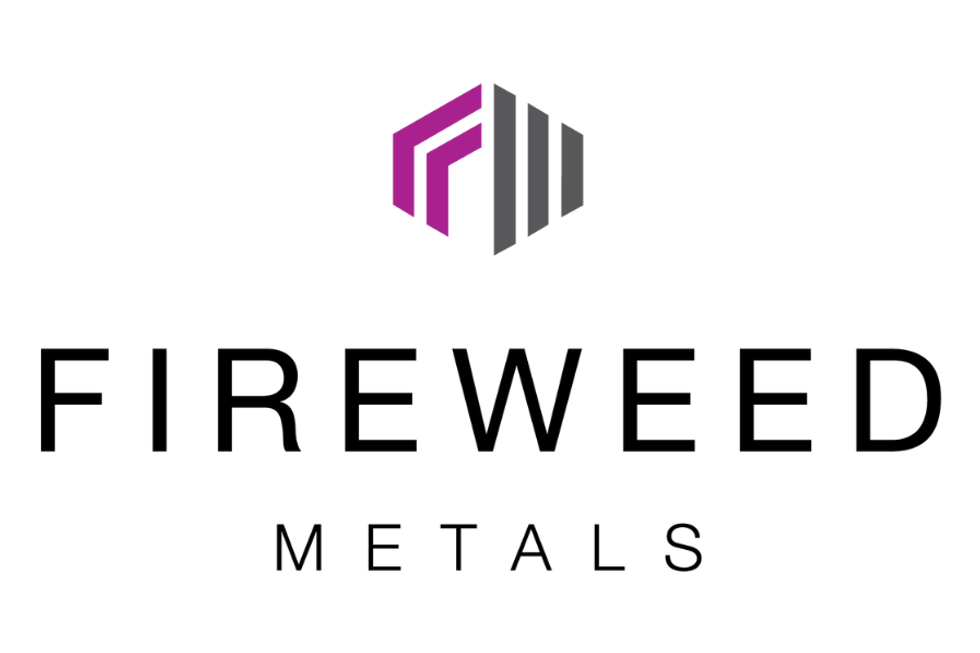The Conversation (0)
- AustraliaNorth AmericaWorld
Investing News NetworkYour trusted source for investing success
Top Stocks
Top Resource Stocks
Top Tech Stocks
Top Life Science Stocks
Trending
Trending Articles
Trending Press Releases
Trending Companies
Trending Reports
Resource
Popular Lists
Investing Ideas
Outlook Reports
- Lithium Outlook
- Oil and Gas Outlook
- Gold Outlook Report
- Uranium Outlook
- Rare Earths Outlook
- All Outlook Reports
Investing Guides
Tech
Popular Lists
- Top Generative AI Stocks
- Top EV Stocks
- Biggest AI Companies
- Biggest Blockchain Stocks
- Biggest Cryptocurrency-mining Stocks
- Biggest Cybersecurity Companies
- Biggest Robotics Companies
- Biggest Social Media Companies
- Biggest Technology ETFs
- Artificial Intellgience ETFs
- Robotics ETFs
- Canadian Cryptocurrency ETFs
Investing Ideas
Outlook Reports
- Artificial Intelligence Outlook
- EV Outlook
- Cleantech Outlook
- Crypto Outlook
- Tech Outlook
- All Market Outlook Reports
Investing Guides
Life Science
Popular Lists
- Cannabis Weekly Round-Up
- Top Alzheimer's Treatment Stocks
- Top Biotech Stocks
- Top Plant-based Food Stocks
- Biggest Cannabis Stocks
- Biggest Pharma Stocks
- Longevity Stocks to Watch
- Psychedelics Stocks to Watch
- Top Cobalt Stocks
- Small Biotech ETFs to Watch
- Top Life Science ETFs
- Biggest Pharmaceutical ETFs
Outlook Reports
- Life Science Outlook
- Biotech Outlook
- Cannabis Outlook
- Pharma Outlook
- Psychedelics Outlook
- All Market Outlook Reports
Investing Guides
American CuMo Mining: Exploring Alternative Sources of Funding
Dec. 27, 2013 10:30AM PST
Precious MetalsSilver Investing News recently spoke to Shaun Dykes, CEO and director of American CuMo Mining, about his company’s proposed US$25-million financing.
When American CuMo Mining (TSXV:MLY) announced its intention to raise as much as $US25 million via an innovative financing agreement, Silver Investing News (SIN) got in touch with Shaun Dykes, the company’s CEO and director, to learn more.
In the interview below, Dykes outlines what exactly the financing entails, as well as how it will benefit investors and the company. He also touches on what is in store for American CuMo moving forward.
SIN: Before we talk about American CuMo’s recent news, could you tell me a little about the company’s CuMo project and how silver fits into the picture?
SD: The CuMo project is probably the largest copper–molybdenum mine in the world, and it’s one of the top 25 silver deposits in the world. The asset is a low-cost producer, located in Idaho.
Our economics are based mainly on molybdenum and copper, and the silver is a by-product. That’s what gives us some flexibility in our funding arrangements — we can do different types of deals without hurting the economics of the project.
SIN: Speaking of funding, on December 18, American CuMo announced a proposed US$25-million financing. My understanding is that the company will be using a model similar to Silver Wheaton’s (TSX:SLW,NYSE:SLW). Can you explain what that entails?
SD:Metals streaming companies like Silver Wheaton put up funds up front for the right to buy certain metals at a fixed price from production in the future. In the case of silver, streaming companies offer money for the right to buy silver at $3.50, $4, $5 an ounce from future production.
Usually such deals are associated with producing mines or mines at feasibility, or occasionally at prefeasibility. We’re not quite at prefeasibility, so it’s a little sooner for us. They’re also normally between one company and another, whereas ours will allow lower-capital-worth investors to buy in.
These deals are used to fund the capital cost of putting a mine into production. They could be for 100 percent of the silver for the mine, 20 percent or a fixed amount of silver, like 50 million ounces or 100 million ounces. Usually they only work if the silver is a by-product of the mine or a small percentage of the revenue stream because you can’t give up one of your main commodities at a huge discount.
We latched onto this concept and found a lot of people were interested. We then came up with the idea of selling $250,000 units that give investors the right to buy 312,500 ounces of silver. To reduce risk, we’ll initially make a 6-percent interest payment on that money as a loan. At the point where we decide to go into production, investors can elect to switch into the silver contract — the $250,000 unit becomes a down payment on that contract — and as the mine starts producing, they’ll get the right to buy the silver at $5. Investors will also have the option of taking the silver as profit.
Worst-case scenario, investors will get the 6-percent interest on the money and their money back. Best-case scenario, they get a lot of silver.
SIN: Can investors purchase more than one unit if they want to?
SD:They can buy single units or they can pool them together into groups. It’s up to them how they want to do it. Individual units are currently unsecured. However, if people want to invest over around $3 million, then we will look at securing the loans.
SIN: What are the advantages of this financing model for investors? What about for American CuMo?
SD:It’s a good investment that could make people a lot of money; we don’t know the exact numbers because we haven’t produced a feasibility study. Our economic analysis shows our silver production should range from a low of about 1.5 million ounces to 4 or 5 million ounces a year. If you use the current price of $20-per-ounce silver, payments would come in anywhere between $150,000 to almost $500,000 per year. If the price of silver is higher, the payments will be more. But of course if the price is lower, the payments will be less.
The risk involves putting the mine into production. If there’s no mine production, there’s no silver. However, the 6-percent interest we pay covers that. It’s not like investors will be putting $250,000 into a black hole. The idea is to pay them while we’re doing all the work — they’re earning 6-percent interest on their money.
From our perspective, we do it because we have to spend money in order to get to feasibility and get to the development stage of the project. To raise that money, we have to give up something, whether it’s direct interest or equity interest. This is one way for us to be able to raise funds without taking a dilution hit on our stock or giving up direct interest in the project. We can afford to give up a bit of our silver because for one thing, silver’s only about 2 to 3 percent of the revenue stream of our entire mine. It doesn’t really affect our economics. The other thing is we did all our economic analysis at $12.50-per-ounce silver. So if we sell 50 percent of the silver for $5 and 50 percent for $20, that gives the mine an average price of $12.50 an ounce, which is what we used in our economics. That’s why we feel it’s a good deal for us and a great deal for investors.
SIN: This is a bit of an unusual approach to financing. Do you expect investors to respond well?
SD: The reason we proceeded is that we already had people that wanted to invest in this — we wouldn’t have done it if we didn’t already have a core. It’s still first come, first serve, but we already had commitments from big groups that wanted to take $4- or $5-million pieces.
Within an hour of the news release, I had three phone calls from people who are interested, so the response was very positive from the start and it should continue.
SIN: When do you see a feasibility study being complete?
SD:We’ll be using the funding to do our resource updates, the second round of metallurgy, another round of economic analysis and to begin the environmental baseline work that we need to do to move the project forward.
Our goal is to get to feasibility in three years. We only have about a year and a half of drilling left to do, but because of the way you have to do groundwater and surface sampling, it’s about a three-year time frame to feasibility. We’ve done a lot of work already, but we won’t be able to make the decision to move into production until after we get to feasibility.
Once we make that decision to move into production, there will be probably a year, a year and a half, maybe two years of construction, depending on where we are in the permitting process.
Securities Disclosure: I, Charlotte McLeod, hold no direct investment interest in any company mentioned in this article.
Editorial Disclosure: American CuMo is a client of the Investing News Network. This article is not paid-for content.
Interviews conducted by the Investing News Network are edited for clarity. The Investing News Network does not guarantee the accuracy or thoroughness of the information reported. The opinions expressed in these interviews do not reflect the opinions of the Investing News Network and do not constitute investment advice. All readers are encouraged to perform their own due diligence.
Related reading:
Q&A with Shaun Dykes, CEO of American CuMo Mining
INN Video: Shaun Dykes on American CuMo Mining’s CuMo Mining Project in Idaho
Outlook Reports
Featured Precious Metals Stocks
Browse Companies
MARKETS
COMMODITIES
| Commodities | |||
|---|---|---|---|
| Gold | 2373.80 | +6.14 | |
| Silver | 28.40 | +0.18 | |
| Copper | 4.38 | +0.02 | |
| Oil | 82.81 | +0.12 | |
| Heating Oil | 2.59 | +0.01 | |
| Natural Gas | 1.74 | +0.03 | |
Investing News Network websites or approved third-party tools use cookies. Please refer to the cookie policy for collected data, privacy and GDPR compliance. By continuing to browse the site, you agree to our use of cookies.


